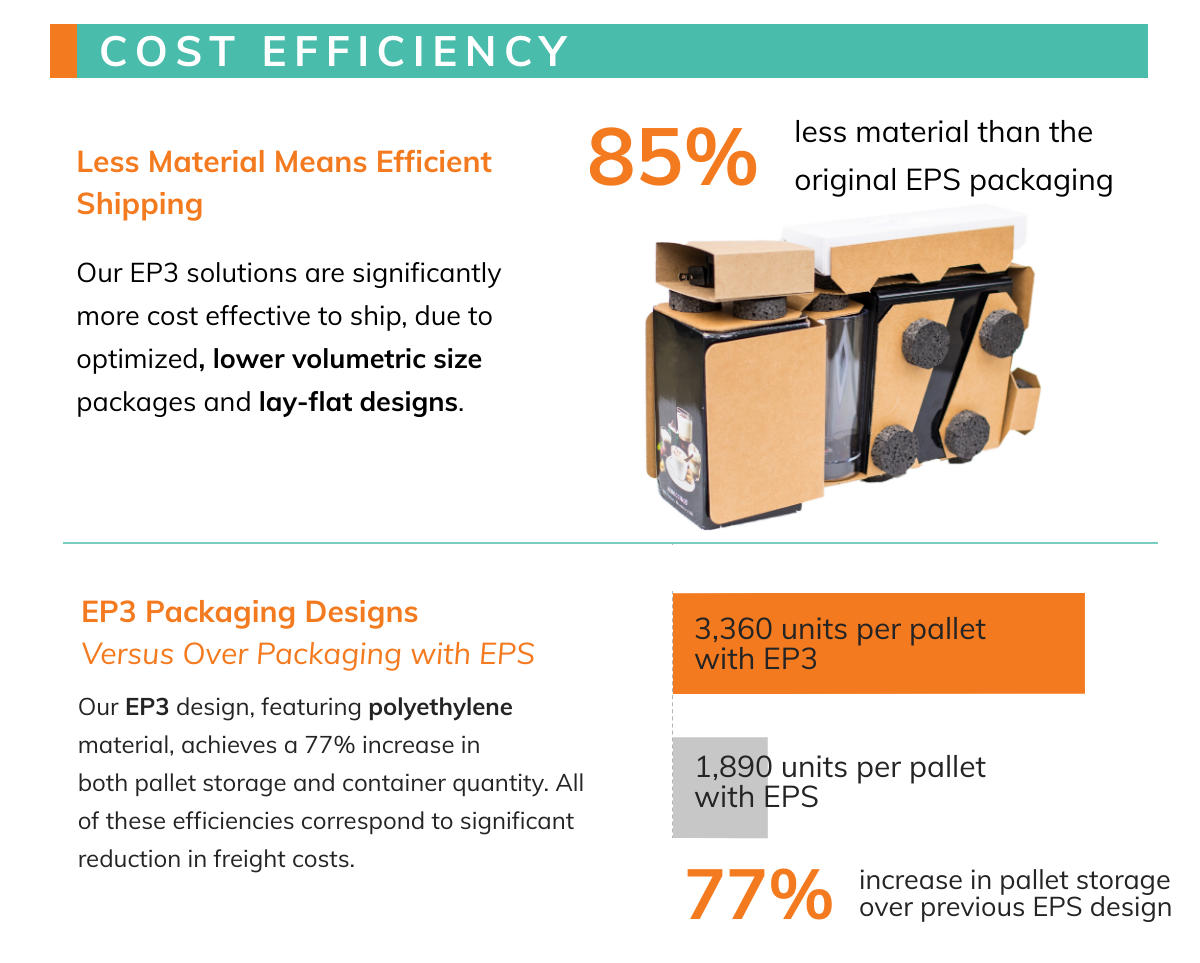Polyethylene vs Polystyrene
Comparing the sustainability, cost efficiency, and protective performance of polyethylene versus polystyrene packaging material.

Recyclability
Polyethylene vs Polystyrene – Polyethylene (EPE) foam represents a significantly more sustainable packaging solution for a variety of simple reasons. Polyethylene foam is reusable and 100% curbside recyclable as a class 4 material. Additionally, our innovative packaging designs, utilizing polyethylene material, achieve an 80% reduction in material. Reduce-able. Reusable. Recyclable.
EPS foam manages a paltry 12% rate of recycling and the overwhelming majority of recycling centers across the United States refuse to accept the class 6 material. What’s worse – polystyrene foam has a consumer recycling rate of only 6%, which means that Styrofoam that makes it to customers almost always ends up in a landfill.
Reusability
Polystyrene is a single-impact cushion material. This eliminates any opportunity for reuse as a packaging material. Further, styrene itself is a dangerous chemical, linked to various health issues including cancer, and a serious threat to the environment. Styrofoam packaging products can leach styrene into their surroundings and even into the products they protect. This makes polystyrene much less versatile of a resource, capable of packaging reuse, and much more of a hazard to society.
Polyethylene on the other hand, presents all of the necessary properties for continued reuse, minimizing its environmental footprint for every package shipped. It’s durability and capacity to absorb multiple impacts make it a perfect material for reusable packaging solutions.
Food Packaging Forum lays out in clear terms which foams are safe for reuse and which are not safe. Polystyrene is “prone to chemical leaching and less suitable for reuse.” In contrast, “plastic containers with the recycling code 2 (high-density polyethylene, HDPE), 4 (low-density polyethylene, LDPE) or 5 (polypropylene, PP) are safest for reuse.”

Less packaging leads to more savings
The formula for evaluating freight and shipping costs factors in the size, weight, and shape of each package. Optimized designs that decrease the volumetric size and allow for higher efficiencies with e-commerce shipping achieve significant cost efficiencies over traditional packaging methods. EPE USA utilizes polyethylene to engineer packaging designs that achieve up to an 80% reduction in material usage – all of which corresponds to volumetric efficiency and freight cost savings.
Further, we design polyethylene packaging solutions capable of collapsing, nesting, and laying flat during shipping, which allows for optimal efficiency during transit shipments. Cost efficiencies with lay-flat packaging designs translate to warehouse space and storage savings as well.
To put it simply, polyethylene is a better material choice when it comes to designing packaging solutions. With our proprietary designs utilizing PE foam, we are able to reduce material and improve freight cost savings.

Protect the package at all costs
Polyethylene proves to be a better packaging material than polystyrene even when discussing the basics of cushioning performance. Expanded polyethylene foam is capable of withstanding multiple impacts. This makes it a perfect cushioning resource, capable of protecting products throughout their entire transit process.
Multi-impact cushioning protection is crucially important in e-commerce, where transit shipments are long and can involve between 5-20 different touchpoints. The e-commerce industry sustains $6 billion worth of product breakage annually, much of which can be attributed to the failures of traditional packaging materials.
When comparing protective capabilities, polyethylene’s natural properties elevate it above polystyrene material. In contrast to polyethylene, EPS foam is a single-impact material, rendered useless after one big bump in the road. As a result of traditional packaging with polystyrene material, shipping damage represents a significant cost for e-commerce businesses.

Polyethylene as a replacement for polystyrene
EPE has helped businesses reduce their e-commerce shipping damage rates from 20% down to 1%. This is accomplished by replacing polystyrene with more sustainable, more efficient and higher performing material. Utilizing polyethylene as the cushioning material in our EP3 designs allows us to use the exact amount of material, positioned in the precise locations, to allow for optimal product protection.
We welcome the trend of businesses transitioning away from polystyrene to more sustainable materials, like polyethylene. And we offer our innovative and sustainable polyethylene packaging solutions as a superior alternative to polystyrene. And we offer our innovative and sustainable polyethylene packaging solutions as a superior alternative to polystyrene.
Make the switch today
Talk to one of our experts today about your packaging requirements and how we can design a perfect solution for your product.